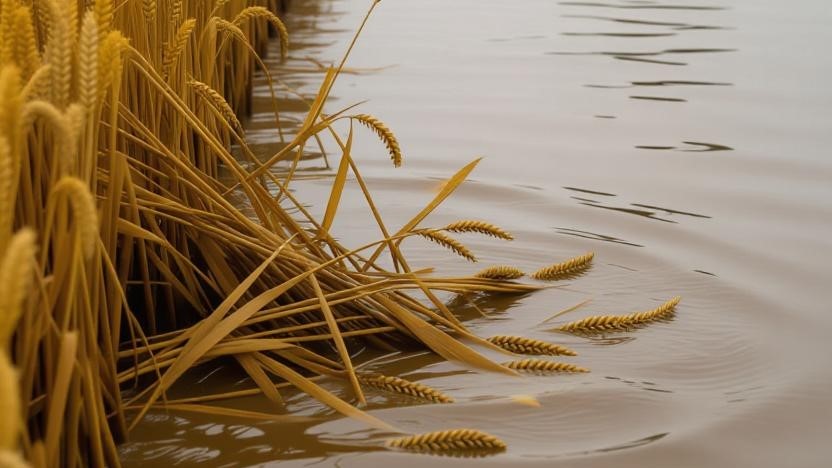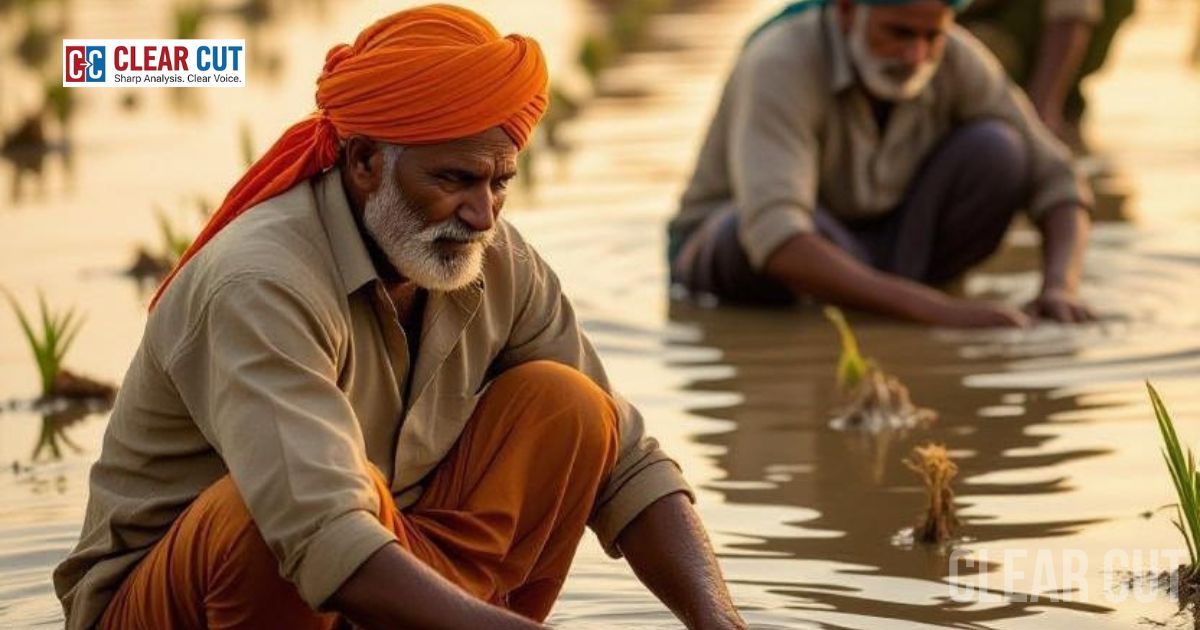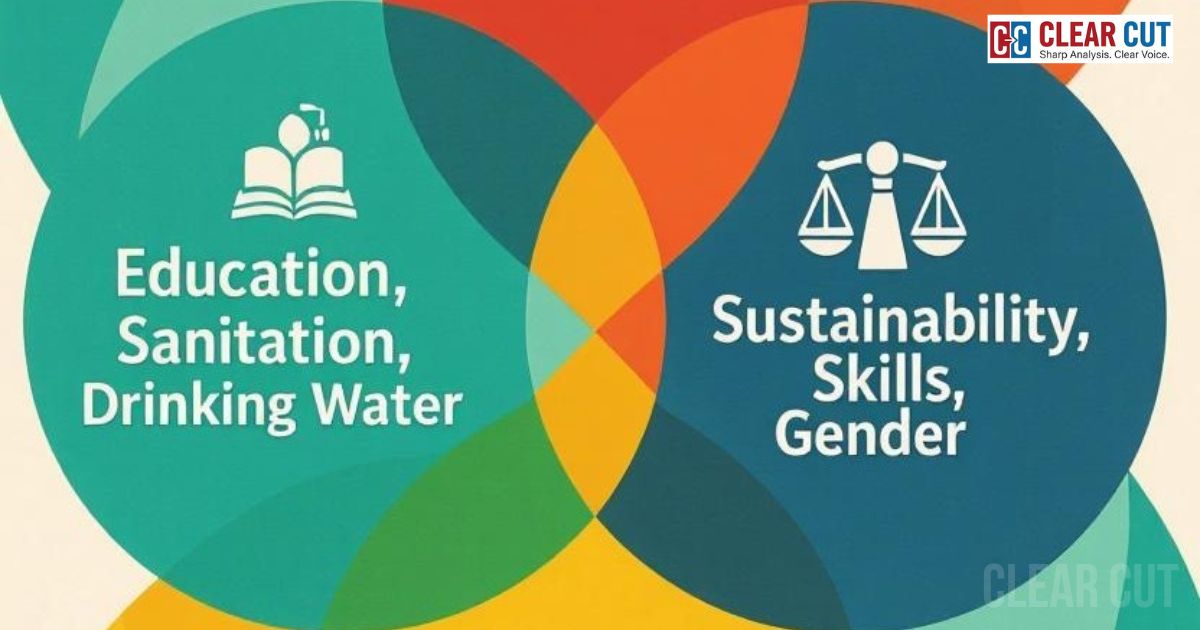Photo Credit: Antara Mrinal
Clear Cut Livelihood Desk
New Delhi, UPDATED: Sep 17, 2025 05:00 IST
Written By: Antara Mrinal
Every monsoon season India anticipates heavy rainfall, but this year Punjab’s storms brought damage instead of warning. Torrential downpours, raging rivers, and floodwaters that flowed over farmland disrupted India’s food bowl. The results were destroyed crops, lost livelihoods, and inflation likely spread throughout kitchens across the country.
Punjab’s Flood Crisis: The Numbers
Punjab has witnessed one of its greatest inundations in many decades. As per the latest reports, 1,650 villages are affected, with more than 1.75 lakh acres of lands submerged, with standing kharif crops, especially paddy, taking the brunt of the loss. Rainfall in the state was about 109% above normal in the last few days, much more than historically expected rainfall patterns.
Patiala district has recorded more than 18,000 acres of paddy lands affected across 69 villages; approximately 10,485 acres of these lands had more than 33% damage. Total assessed crop land losses have approached nearly 400,000 acres (≈1.6 lakh hectares) in Punjab, affecting over 384,000 people across seven districts. The flood is an escalating tragedy with the loss of lives/livelihoods continuing to grow, and it has been described as the worst flood events in the state since 1988.
From Fields to Forks: Why Food Inflation Is Looming
Punjab generates around 9.6% of India’s total rice production – put simply, what happens to these fields has broad significance. When so much staple crop land is submerged or otherwise impacted, the supply chain stops growing before harvest.
Vegetable inflation is somewhat guaranteed: volatility in food prices has already crept up, and in Punjab specific, the Consumer Price Index (CPI) inflation for food is reported to be over 3.5% in July, and higher still in rural areas. The damage to paddy, sugarcane, and cotton – according to multiple districts – even tighter markets for commodities. For example, Basmati rice production is estimated to be cut from 32 lakh metric tonnes to 27 lakh MT this season, mainly due to flood damage.
And losses are rarely localized. Supply shortages from Punjab will raise trade costs, travel, and consequently, price hikes at the grocery shops in major urban areas like Delhi and Mumbai. The inflation ripple effect could especially impact poorer families who already spend the bulk of their income on food staples.
The Devastation of Paddy in Patiala
In Patiala district, both the scale and timing of devastation make this a double whammy. Paddy was ready to harvest, flooded fields wiped out important fields and plants at vital grain-filling stages. Now, farmers wait to see if they will receive compensation. The government’s revised policy for compensation allows distressed farmers to claim ₹ 10,000 per acre on land with 26%-75% of crop loss, and ₹ 20,000 per acre where crop loss is estimated to be greater than 75%. Nevertheless, fields that are considered less damaged by flooding but, have water stagnating in them, will likely prove to be less productive than they once were, due to silt deposition, and delayed drying.

Why the Threat Is Bigger This Time
A few different factors add to the awful losses of agriculture in the flood season. The heavy rain is one factor – in defined regions of Punjab, the August rains were reported to be approximately 74% above long-term averages, which inundated fields and overwhelmed existing irrigation systems. Impacts seem to be wide reaching as well, with multiple districts hit at the same time, which means that the usual buffering provided by inter-district supply chains, which can always be relied on to some extent, did not exist; therefore, entire regions were entirely vulnerable. The timing of the flooding was also compounded by the crop standing foliar growth stages. During this period crop waterlogging will increase the risk of sheath diseases in rice and other crops. To make matters worse the disaster has happened following a series of shocks; many farmers had already been impacted by floods in the past year; and the recurrence of events takes a toll unanticipated: this has eroded resilience, and left households with diminished financial and emotional resources to build back.
What are the Farmers and Policymakers Saying?
Voices from the fields are full of despair. Many have purchased inputs like fertiliser, labor, and seed, to delay profits, which they are now reporting that that they do not recover their inputs, let alone gain profits. “Everything is gone,” said Parmpreet Singh, Amritsar farmer with 7 hectares of land lost, a moment of despair echoed in hundreds of communities.
Policymakers are announcing compensation packages: for the most part, each district was given ₹20,000/acre (for submerged land and home damage) and allowances for loss of livestock. The state governments are cashing in the flood and their making pleas for speed in processing claims, and investments in flooding infrastructure. As an example, the Punjab Governor approved an immediate relief deal at ₹1,600 crore total; identified priorities include repairs to embankments and dredging of canals.
Can Food Prices Be Stabilised?
Some analysts suggest that while we may see regional food inflation, we may not see a national surge in food prices, if food reserves are released and food from unaffected regions can be brought in quickly. Food reserves, exports to other countries and trading partners, and imports can help buffer the effects of flood disasters on food supply chain disruptions. However, these mitigative supply chain responses take careful coordination and time to effectively reduce disaster-impacted food supply chain disruptions and losses.
Implications and Policy Gaps
Improving India’s agricultural resilience to recurring floods require longer-term action program. Increased management of water resources and canal management can manage overflow and prevent embankment failures effective on loss of farmland. Improved drainage and rehabilitating the soil is essential particularly for prevention of silt deposition which enables the farmers to replant or prep the fields for the next cropping season. Furthermore, it is equally important to ensure farmers receive timely payment of claims and compensation ensure farmers do not wait for months to recoup losses. Resilience also requires diversifying cropping pattern and potential cropping calendars reducing reliance on a single crop vulnerable for flooding. Furthermore, required investments in flood forecasting systems, timely and accurate weather early warnings and development of seed varieties resilient to waterlogging will enhance both preparedness and recovery and provides farmers and food system more and healthy resilience to climatic shocks.
The flooding inundating Punjab isn’t simply flooding; it’s a trend. When fields are underwater, when crops go wasted, and when farmers go deeper into debt than they earned in money, the chain reaction begins: shortages increase, prices rise, and people go hungry. Securing agriculture is not only supply, it is securing the people who touch the soil.
For India to avoid inflationary spirals in food pricing, the state of agriculture in India requires immediate and concerted action. Agriculture is a process that means your fields require care beyond just planting your crops, and finally implementing policy change that secures both crops as well as farmers. When Punjab suffers, the rest of the country’s table shakes.
With inputs from:
- Torrential rains and floods in northwest may fuel food inflation with Punjab worst hit, Times of India, Sept 2025.
- Punjab is facing its worst floods since 1988: Around 1,900 villages submerged, damage to 400,000 acres of crop land, etc. – Mongabay India.
- Persistent heavy rain and floods impact crops across India (Crisil report).
- Food price volatility; heavy rains destroy crops in Punjab – Hindustan Times.




